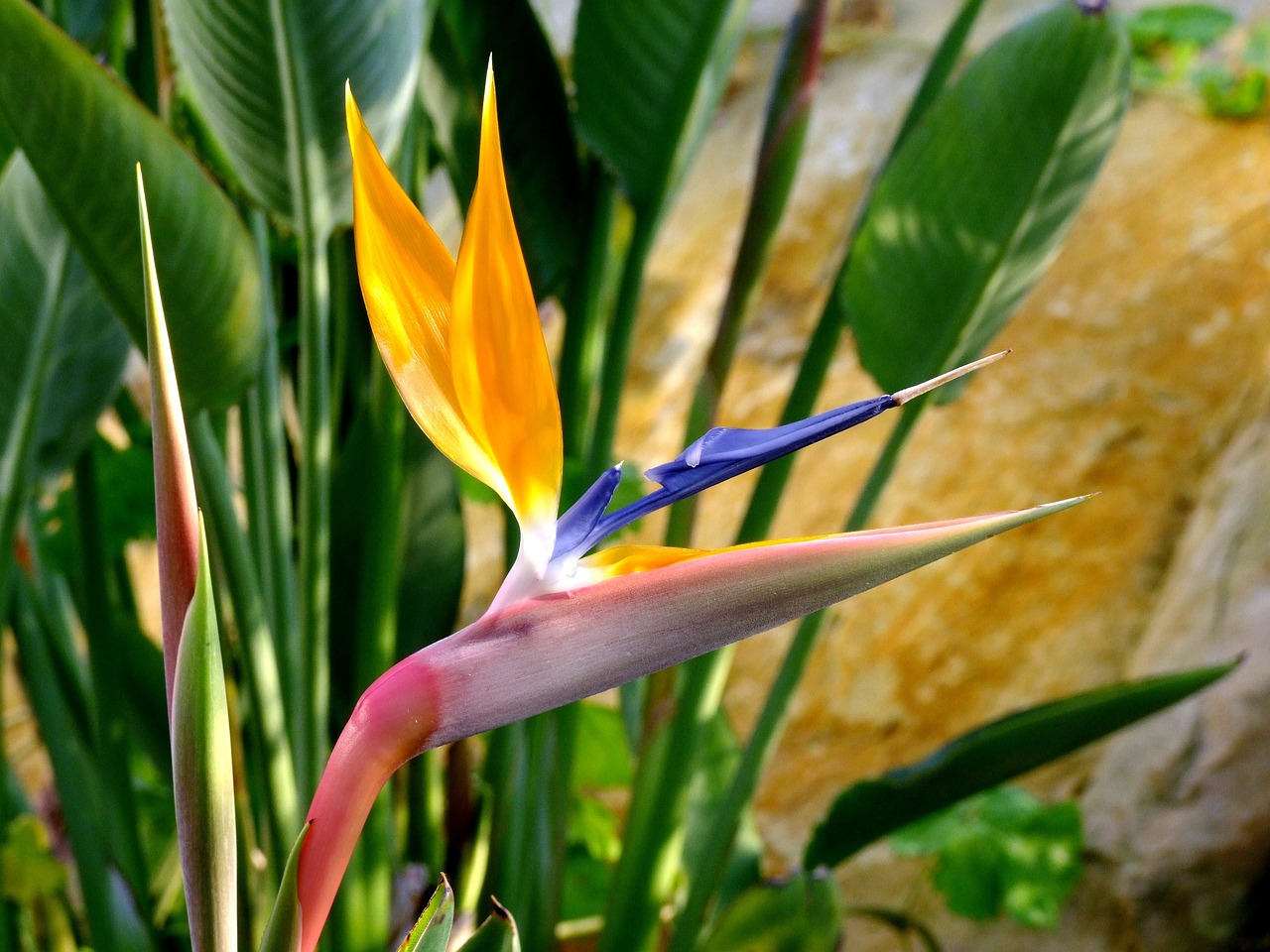
Bird of Paradise
Strelitzia reginae
Basic Information
🌿 Family: Strelitziaceae🗺️ Zone: 9-11
Other Names:
- Crane Flower
🌡️ Ideal Temperature : 60°F – 70°F
🔥 Heat Tolerance: Up to 100°F
❄️ Cold Tolerance: Down to 24°F
🌱 Type: Perennial
Layers
- Shrub
Functions
- Pollinator
- Wildlife Attractor
- Border Plant
- Ground Cover
Pests
No pests associated with this plant.
Description
The Bird of Paradise (*Strelitzia reginae*) is a striking evergreen perennial native to South Africa, renowned for its vibrant flowers that resemble a bird in flight. The plant typically reaches heights of 1.2 to 1.8 meters (4 to 6 feet) with a similar spread, forming clumps of large, banana-like leaves. Its unique orange and blue flowers emerge from a horizontal inflorescence, providing a tropical aesthetic to gardens and landscapes.
🌞💧 **Sun and Water Requirements:**
Prefers full sun to partial shade; optimal flowering occurs with ample sunlight. Requires moderate watering; soil should be kept moist but well-drained to prevent root rot.
✂️🫘 **Methods to Propagate:**
Propagation is commonly achieved through division of clumps or by seed. Dividing mature plants ensures genetic consistency, while seed propagation may result in variability and requires patience, as seedlings can take several years to flower.
🧑🌾👩🌾 **When to Harvest:**
As an ornamental plant, there is no traditional harvest. However, mature flowers can be cut for floral arrangements when fully developed.
Purpose
- Pollinator: The Bird of Paradise's vibrant flowers attract pollinators such as sunbirds in their native habitat, enhancing biodiversity.
- Wildlife Attractor: Provides shelter and nesting sites for small birds and insects, contributing to local ecosystems.
- Border Plant: Its structural form and striking appearance make it ideal for use as a focal point or border in landscape designs.
- Ground Cover: In suitable climates, it can serve as an effective ground cover, suppressing weeds and stabilizing soil.